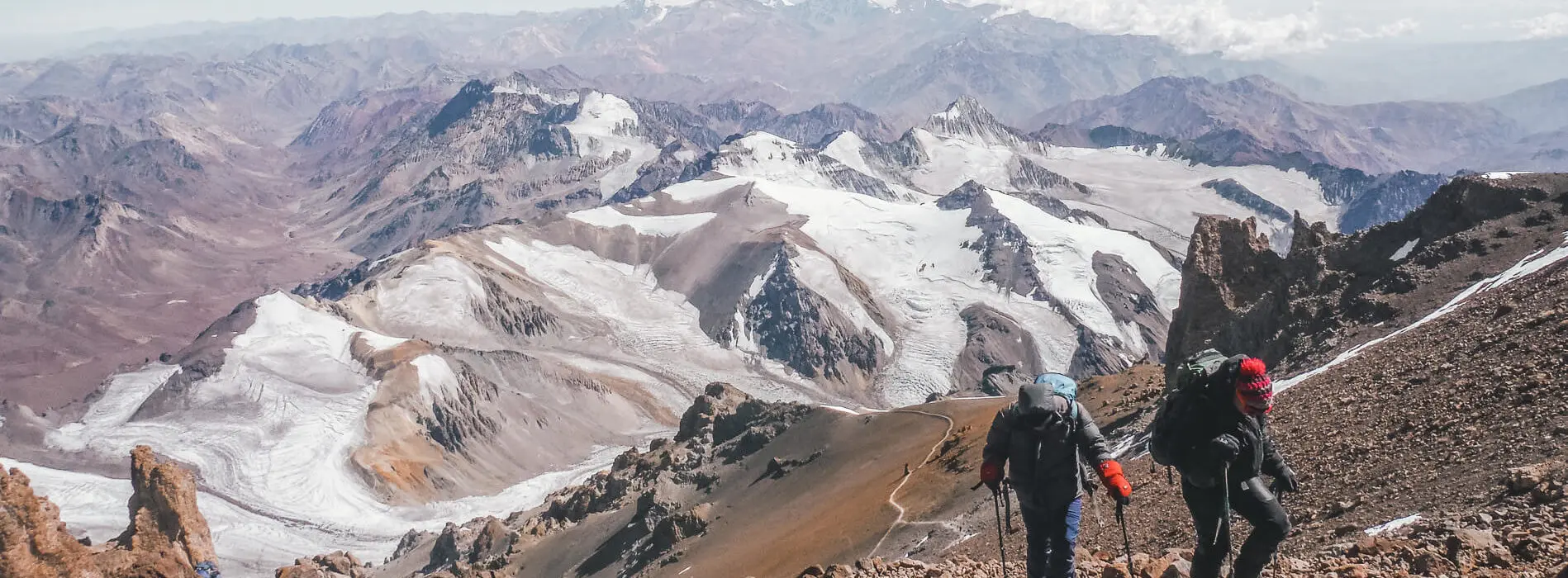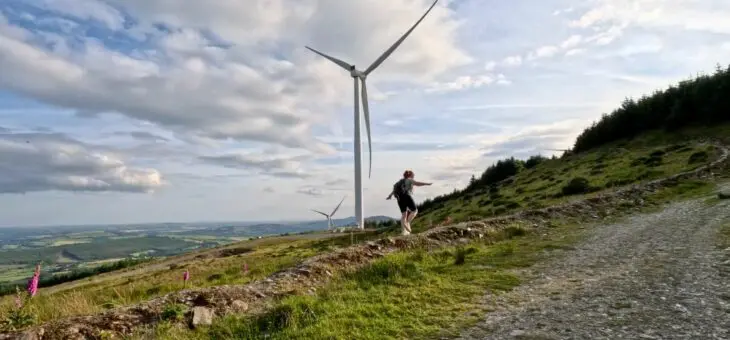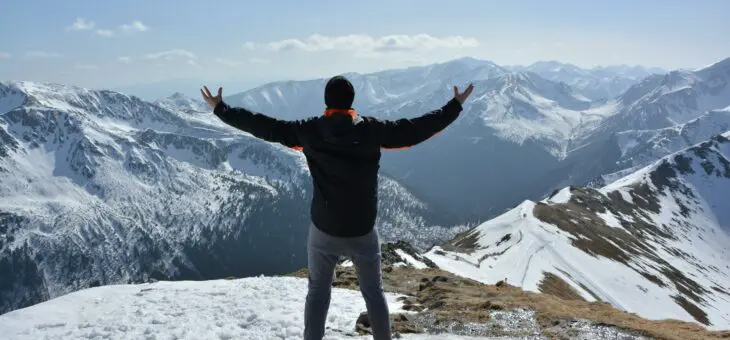Conquering one of the legendary Seven Summits is never going to be easy, and climbing Aconcagua (6,962m) is no exception. If you’re wondering exactly how difficult it is to climb South America’s tallest peak, read on! We’ll break down the challenges and what it takes to tackle this Level 8 expedition.
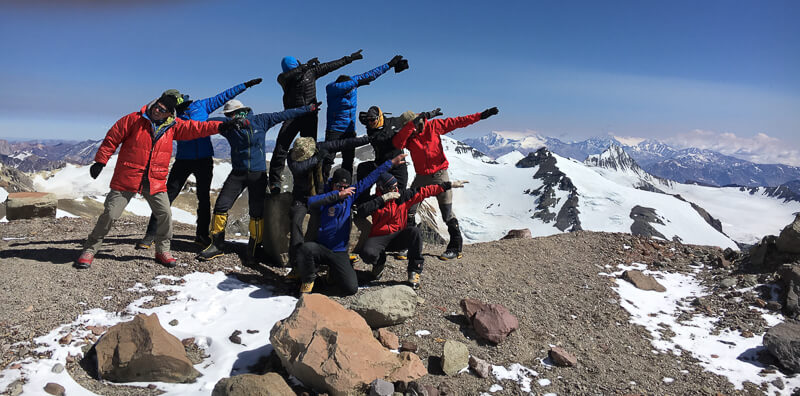
Is ACONCAGUA A TECHNICAL CLIMB?
Aconcagua is classified as a non-technical peak. It is considered as a trekking peak rather than a technical climb, which means that it doesn’t require specialised climbing skills or equipment. Despite this, Aconcagua is still a formidable challenge due to its high altitude, rapidly changing weather conditions, and demanding physical requirements. Depending on the amount of snowfall in a given season, there can sometimes be snow and ice on the summit route. For that reason, our amazing expedition leaders run skills training during our rest day in Camp 2, showing you how to use crampons and walk efficiently on snow so you’re ready for summit day.
How fit do I need to be to climb Aconcagua?
As one of the highest peaks outside the Himalayas, a high level of both physical and mental fitness is essential for climbing Aconcagua. You should be comfortable with long hikes carrying a heavy backpack (around 20kg) for several days in a row. Here’s what you should be prepared for:
- Trekking Duration: Expect to trek an average of 6 to 8 hours per day.
- Elevation Gain: Daily elevation gains typically range from 500 to 1,000m.
- Summit Day: The final push to the summit involves a gruelling 12 to 15 hours of hiking, with a 900m elevation gain.
hOW TO TRAIN FOR CLIMBING ACONCAGUA?
The following are some key areas to focus on when training to climb Aconcagua. Remember – always consult a professional before starting any new training program, especially if you have any pre-existing conditions. It’s important that your training plan is suitable to your individual needs.
- Cardio Training: Engage in regular cardio exercises to build stamina, including going on regular hikes on varied terrain.
- Strength Training: Focus on leg strength with exercises like squats and lunges, and develop core strength.
- Hiking with Weight: Practise long hikes carrying a loaded backpack to build endurance. Gradually increase the weight to 20kg to simulate expedition conditions.
- Mental Preparation: Practise mindfulness and mental resilience. Spend time in nature, where you can experience changing weather conditions and varied landscapes.
You can also attend your designated training weekend in Glendalough, Co. Wicklow before the expedition. Led by experienced guides, you’ll get briefed, go on hikes, and receive expert advice on all expedition essentials.
DO I NEED PREVIOUS EXPERIENCE TO CLIMB ACONCAGUA?
We highly recommend having previous high-altitude experience (>5,000m) before attempting to climb Aconcagua. Trips such as Kilimanjaro (5,896m – another of the Seven Summits, if you want to start ticking off the list!), Kang Yatse II (6,250m), or our Three Passes Trek would be excellent preparation for climbing Aconcagua.
You should be comfortable withstanding harsh mountain conditions for several days in a row. The summit push for this expedition takes place in a remote location, and you will typically need to carry your own equipment during this time. In addition, you need to be adaptable, as the itinerary may change due to weather conditions.
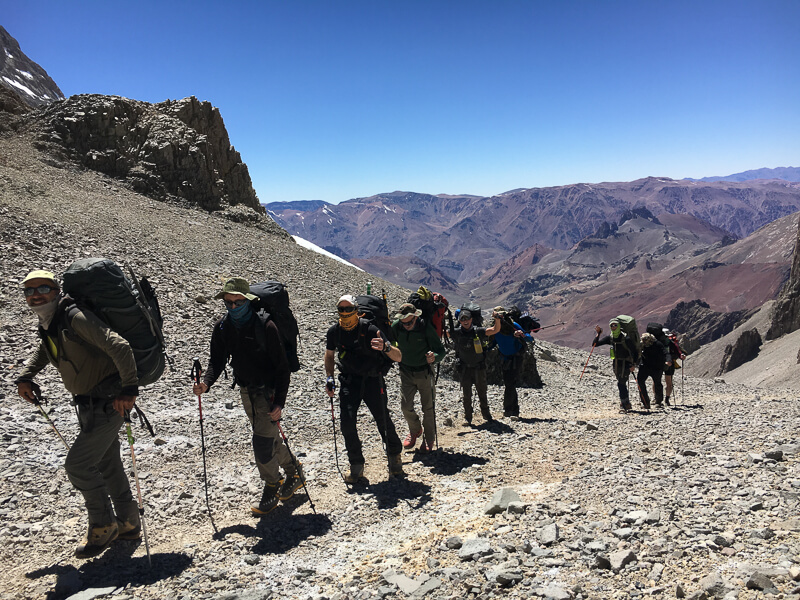
CAN WEATHER Affect how hard it is to climb aconcagua?
The weather on Aconcagua is notoriously unpredictable. You must be prepared to face extreme cold, high winds, and potential snowstorms. Temperatures can plummet dramatically, especially at higher altitudes. Strong winds are common and can make the climb more challenging. We incorporate flexibility into our itinerary so that our expedition leaders can select the best day available weather-wise to push for the summit.
During the times of year that we visit, temperatures may vary from 0 to 30 degrees during the day and -30 to 10 degrees at night. Wind chill can lower temperatures significantly, making the nights particularly cold while the days are generally hot.
How long does it take to climb aconcagua?
Our Aconcagua expedition lasts 21 days, with 16 days of trekking. This includes time for acclimatisation, rest and camp rotations before the summit attempt. We also incorporate two spare summit days to account for bad weather.
Summit day on Aconcagua typically involves 14 hours of hiking from Camp 3 to Summit, and then back to Camp 3. We start preparations at 4am and begin the steady climb to the top around 5.30am. We take breaks at White Rocks (6,200m) and at the Independencia Hut (6,400m). We also rest at the bottom of the Caneleta (6,650m) – a steep gully which leads to the summit ridge. Moving up the Caneleta is very slow all the way to the summit. After the summit, it takes roughly 4 to 5 hours to return to Camp 3.
conclusion
So, how hard is it to climb Aconcagua? While it does not require technical mountaineering skills, the expedition is demanding due to its physical and mental challenges. High fitness levels, proper acclimatisation, and preparation for harsh weather conditions are crucial. But, with the right preparation and training, summiting Aconcagua is a very achievable goal!
If you think you’re ready for this epic adventure, you can visit the Aconcagua expedition page for dates and availability.
You can also book a free 15-minute Aconcagua trip consultation with one of our team members here!
